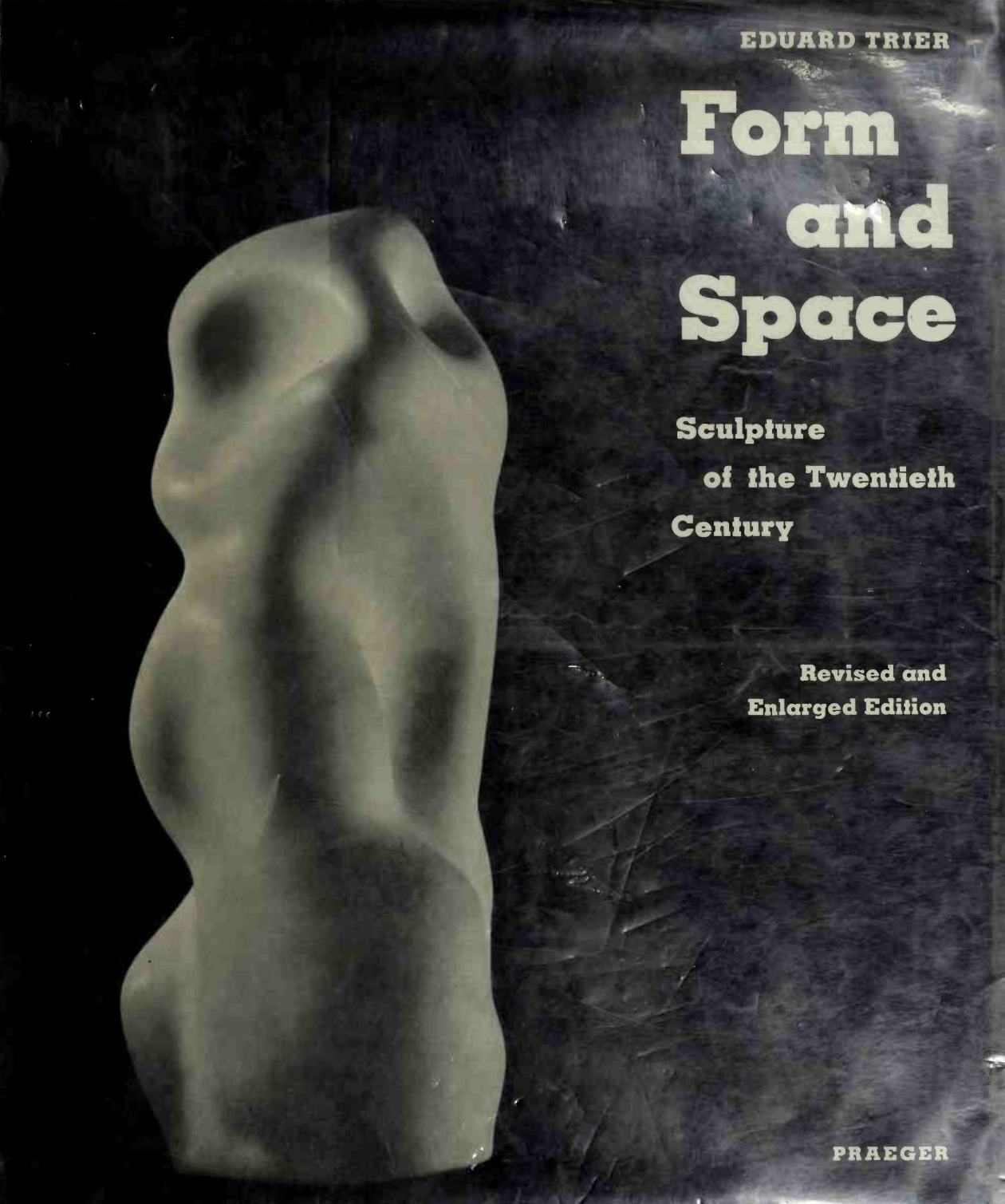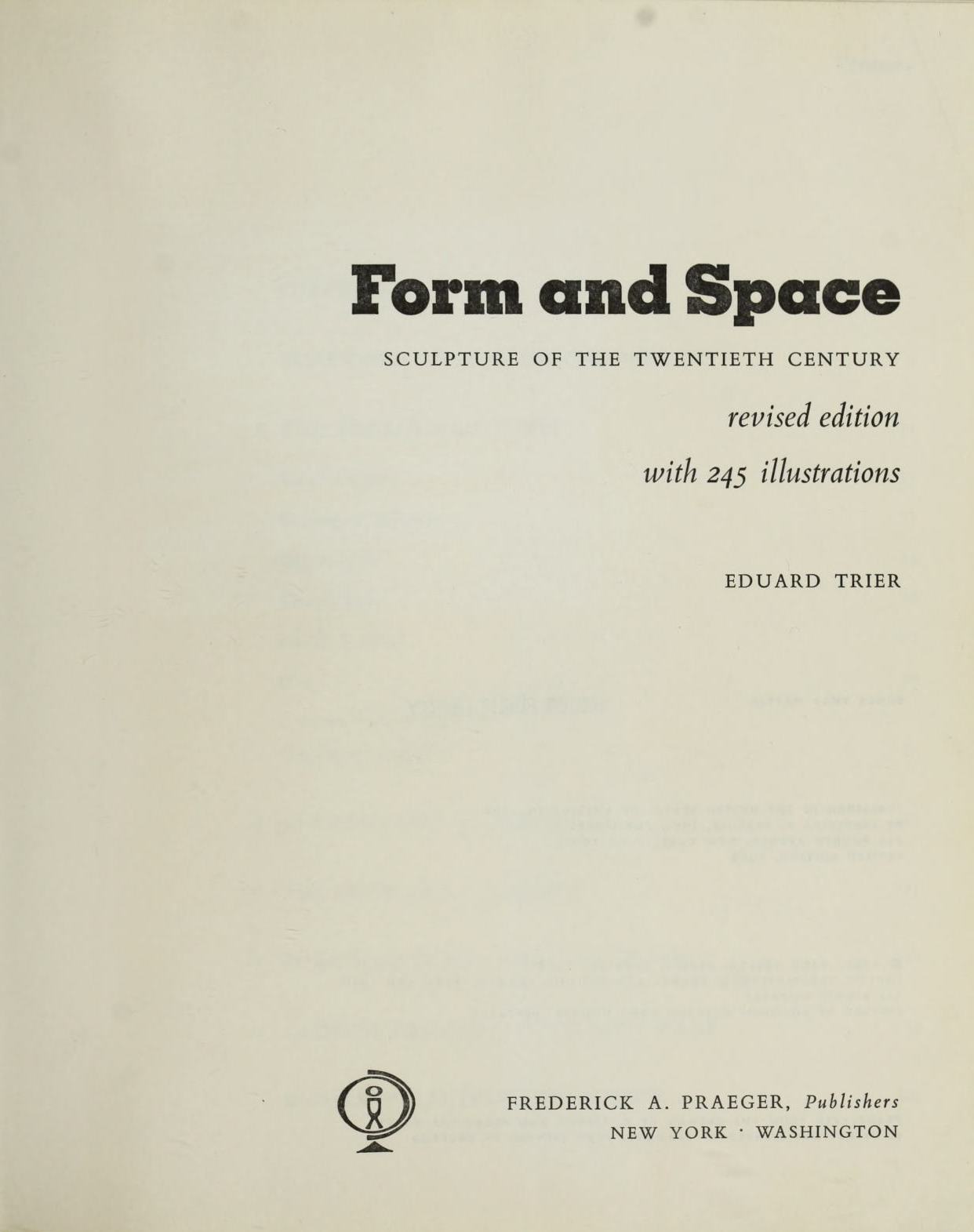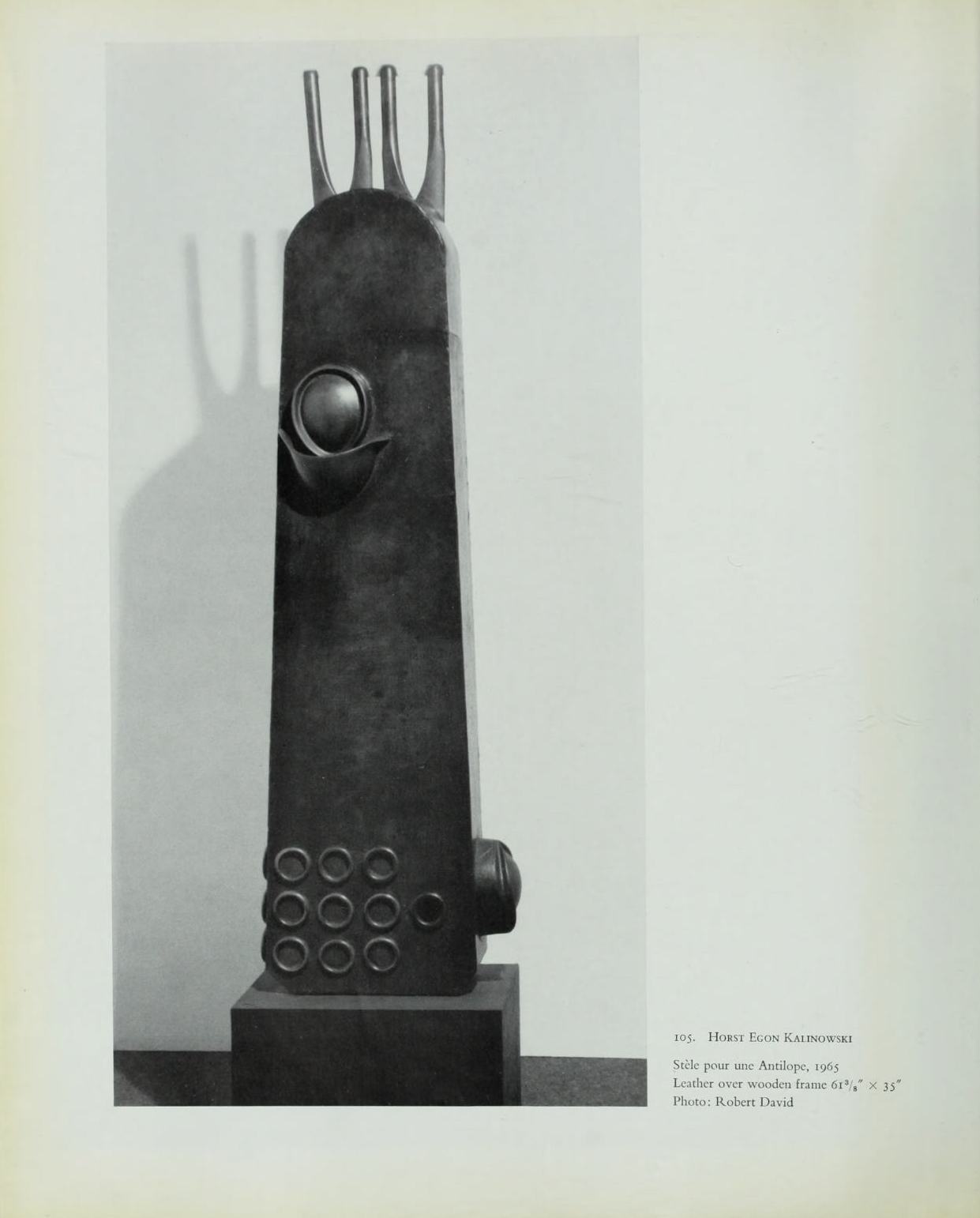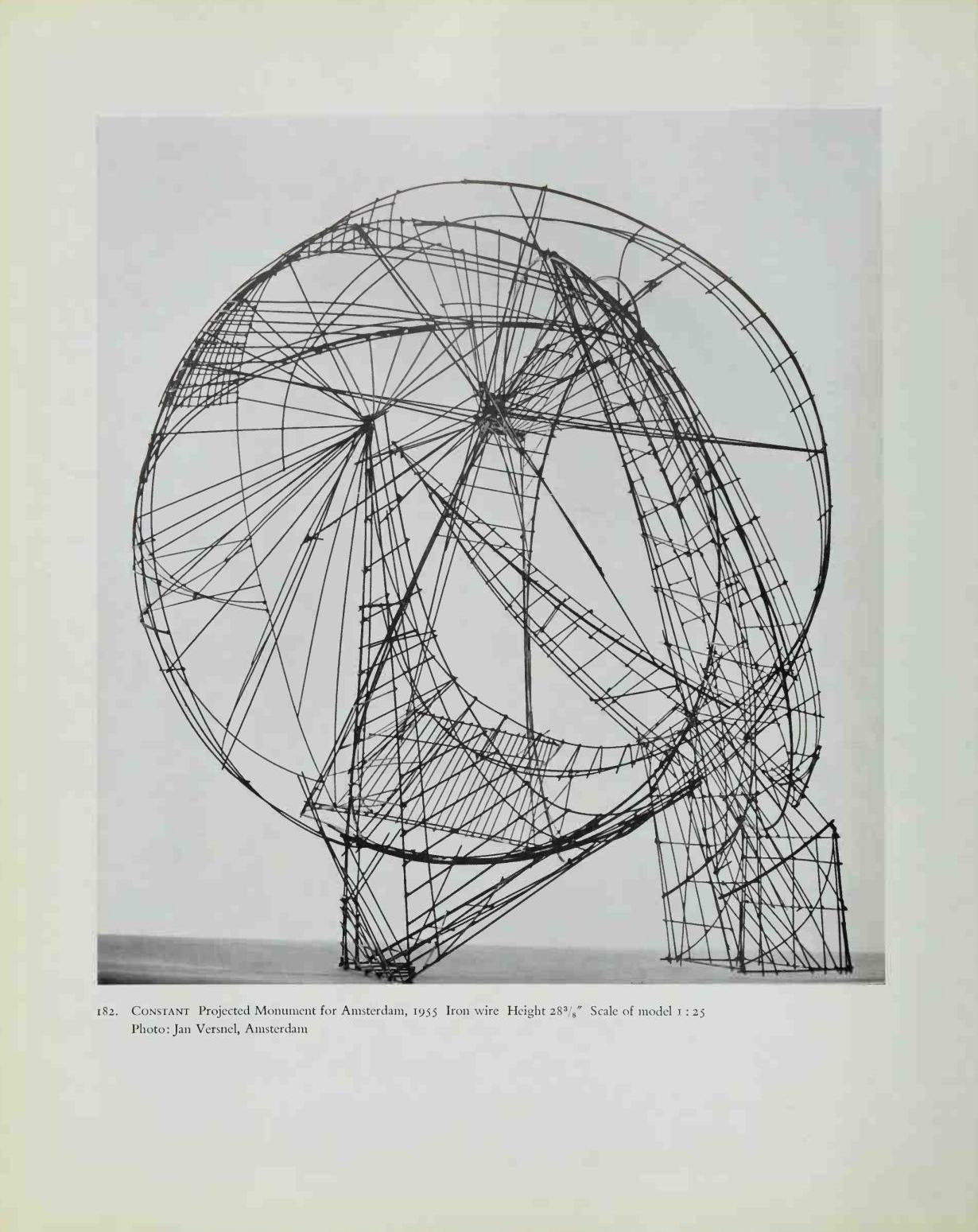|
|
Eduard Trier. Form and Space : Sculpture of the Twentieth Century. — Revised edition. — New York ; Washington, 1968  Form and Space : Sculpture of the Twentieth Century / Eduard Trier. — Revised edition with 245 illustration. — New York ; Washington : Frederick A. Praeger, Publishers, 1968. — 340 p., ill.Contents
FOREWORD 7
FOREWORD TO THE SECOND EDITION 9
I THE PROBLEM OF FORM 11
Kernel Sculpture 12
Opening up of Volume 13
Sign in Space 14
Constructions 16
Mobile Sculpture 29
Relief 30
Excursus: Conglomerates and ‘Recognized’ Sculpture 32
II THE PROBLEM OF MEANING 42
III THE PROBLEM OF PURPOSE 223
IV FORM AND SPACE: VARIATIONS 1967 250
V CLOSING REMARKS: FORM AND SPACE 314
BIOGRAPHICAL INDEX OF ARTISTS 321
Foreword
This book is not a history of style, nor a lexicon whose main advantage would be completeness from A to Z. Its purpose is rather to plot in word and image the typical features of 20th-century sculpture, bringing out connections and oppositions. Chronology, nationality and membership of this or that school play a subordinate role. Attention is directed to the problems of modern sculpture and an attempt is made to lend speech to this silent art.
Descriptions of individual pieces from many countries serve as so many approaches to the theme of form and space. The two terms are to be taken in the widest sense and as including their usual synonyms. This applies in particular to ‘form’ which is not restricted in a classicizing spirit to the human figure. As to ‘space’, it need hardly be pointed out that it is to be understood in the artistic not the scientific sense. Regarding method and arrangement the following may be observed: using the examples assembled I consider successively the problems of form, of meaning and of purpose. The reader may suspect collusion in this game of question and answer; I hope, none the less, he will not reject the procedure as rhetorical or theorizing. Its sole aim is to bring him into the closest possible contact with the works themselves.
The treatment of the first problem, which is concerned with typical manifestations of sculpture, is also an exercise in method serving to elaborate the framework for the treatment of the two other problems. The second one, that of meaning or theme, suggesting a kind of iconography, cannot, of course be divorced from the first since in art content cannot exist except as form; hence the results obtained in treating the first will often be drawn upon. Finally the third problem, that of purpose, will be concerned solely with sculpture as a public art. The reader is requested to consider the book as a unity in spite of this threefold division.
I have written this book as an hommage to modern sculpture and thus the threefold division and the resulting order in which the works are considered cannot possibly imply any judgment of value. It is by the inclusion of their works that I pay my tribute to the various artists concerned, and to this must be added my gratitude for the invaluable help that many of them have given me.
(1959)
Foreword to the second edition
This second edition of Form and Space gives me the welcome opportunity not only of making corrections to the book, which dealt with the problems of sculpture in 1959, but also of enlarging it. I am above all indebted to the English readers for their interest in Form and Space, for without them this reappraisal would not have been possible so soon.
The revision does not affect the conception of the book, in which text and pictures are integrated. On the contrary, I have tried to emphasize the main themes even more clearly. Of course Form and Space is not a historical treatment of 20th-century sculpture which requires merely the addition of recent material to bring it up to date. I therefore decided to add in the new edition a fifth chapter in which the main theme is modified in relation to 1967.
Chapters I to IV have been corrected and brought into line with the alterations in the illustration sections – I have substituted 22 plates – made either to improve the quality of the illustrations and to show the sculptures in their present state, or because I wanted to represent some of the artists by better or more typical work, or to document the main theme of the book by the work of other artists.
The reasons for the addition of new text and illustrations are given in Chapter V. Of the 32 additional plates, 21 are devoted to artists who were formerly not represented; these are mostly younger sculptors who were not yet recognized when the first edition of the book was published, and in fact the works of seven newly established artists are also included among the substituted plates.
I received much help in the revision of Form and Space from many artists and connoisseurs. I should therefore like to express my gratitude to the artists, the museums, collectors and galleries, all of whom are acknowledged in the captions. Most of all I should like to thank my friend, the late Jules Langsner of Los Angeles, who, with his extensive learning and his clear power of discrimination, gave me such valuable advice. I also owe thanks to Mrs Hedwig Schuir, librarian of the Staatliche Kunstakademie, Düsseldorf, who untiringly assisted me with the list of illustrations, the bibliography and the secretarial work. To thank all my friends and colleagues for their critical participation would be impossible. But I should like to thank my wife, Edith, for her ever-understanding and patient help by dedicating this book in its second edition to our children, Michael, Marcus and Alice.
Cologne and Düsseldorf
December 1967
Sample pages 
Download link (pdf, yandexdisk; 41.8 MB)
The electronic version of this edition is published only for scientific, educational or cultural purposes under the terms of fair use. Any commercial use is prohibited. If you have any claims about copyright, please send a letter to 42@tehne.com.
29 ноября 2024, 3:25
0 комментариев
|
Партнёры
|






Комментарии
Добавить комментарий